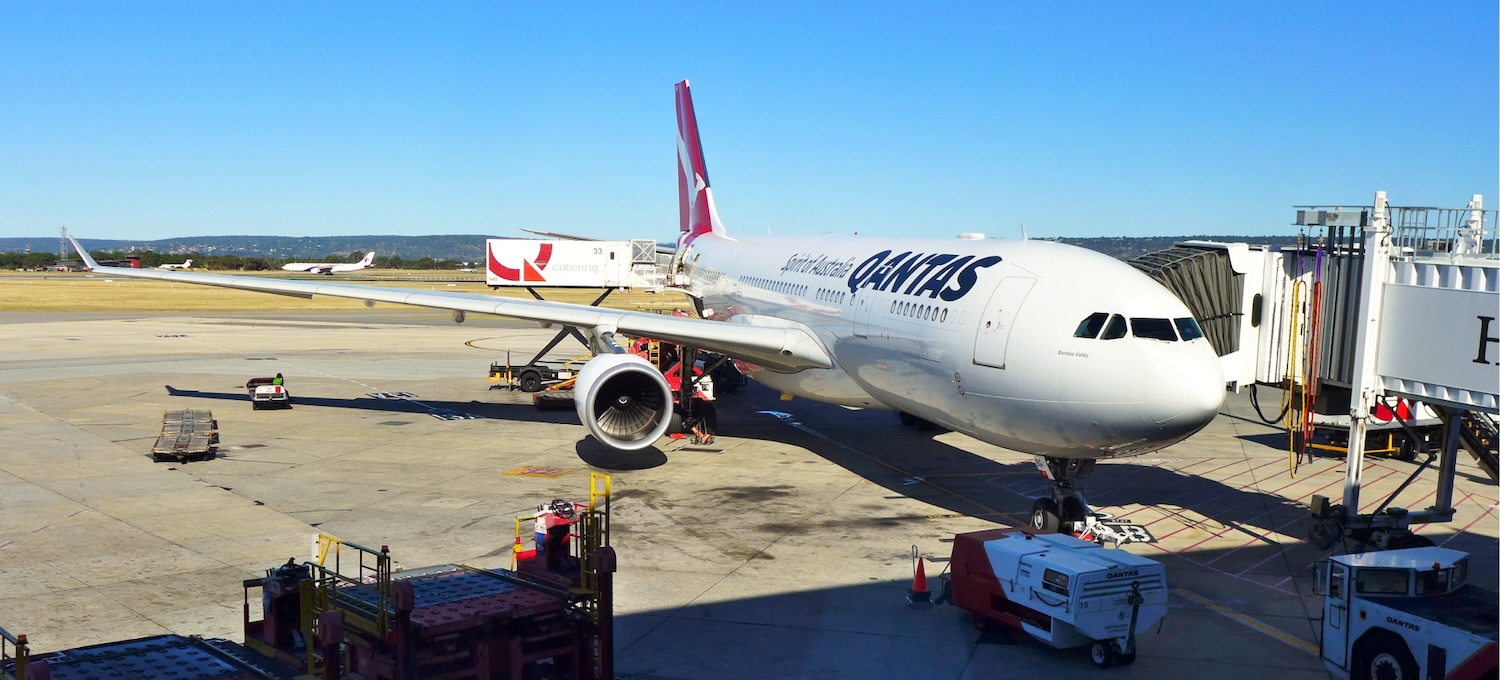Despite their distinct natures, airport operations, smart cities, and manufacturing share a common ground in seeking technological advancements to optimize operations, enhance safety, and improve overall efficiency. Computer Vision AI is reshaping the landscape tackling the shared complexities. From managing vehicle movement on the tarmac to optimizing passenger flow through security checkpoints, Vision AI solutions revolutionize the way airports ensure safety, streamline processes and enhance the overall passenger experience.
In this blog post, we delve into the diverse applications of Computer Vision AI in airports, uncovering its pivotal role in transforming the way we travel and interact within these bustling hubs of connectivity.
Monitoring Vehicle Movement and Security Measures
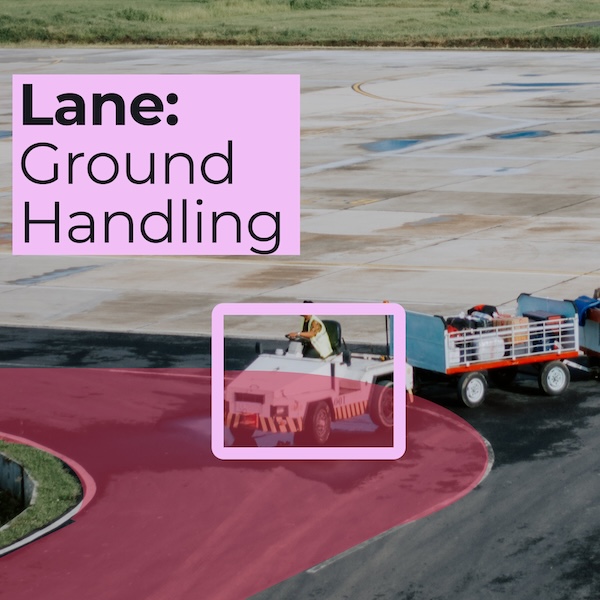
Identifying Designated Lane Intrusions
Maintaining control over vehicle movement within designated lanes, runways, or taxiways is critical for airport safety. Traditional methods often struggle to monitor and ensure compliance with these specified paths, leading to potential safety hazards. Vision AI technology, however, introduces a transformative solution.
Sharing know-how from the context of Traffic Monitoring in Smart Cities, Vision AI-powered solutions have the ability to identify and track vehicles in real time.
This monitoring not only distinguishes authorized from unauthorized vehicle movement but also promptly alerts personnel of any deviations from designated routes. This advanced system significantly enhances airport security by preventing unauthorized intrusions onto restricted paths, reducing the likelihood of accidents and disruptions to airfield operations.
Vehicle Movement Monitoring
Computer vision technology is transforming airport operations, particularly in managing vehicle movement around airplanes on apron or ramp areas. One prevalent issue has been the risk of collisions or unauthorized access, especially due to the limited visibility and the multiple simultaneous operations, posing safety hazards and operational delays.
Various vehicles are constantly in motion on an apron area around airplanes, such as baggage carts, fuel trucks, catering vehicles, pushback tugs, and various other service vehicles.
Vision AI can provide monitoring of the ground traffic flow, detect and identify vehicles moving in designated areas, and provide instant alerts on ground crews and airport operations.
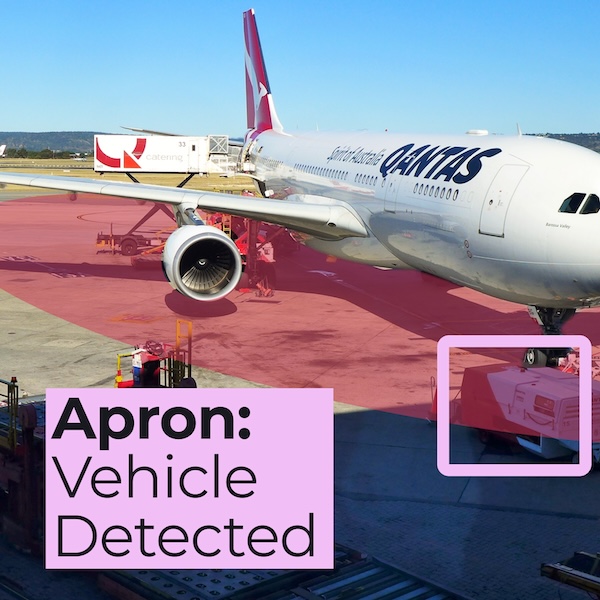
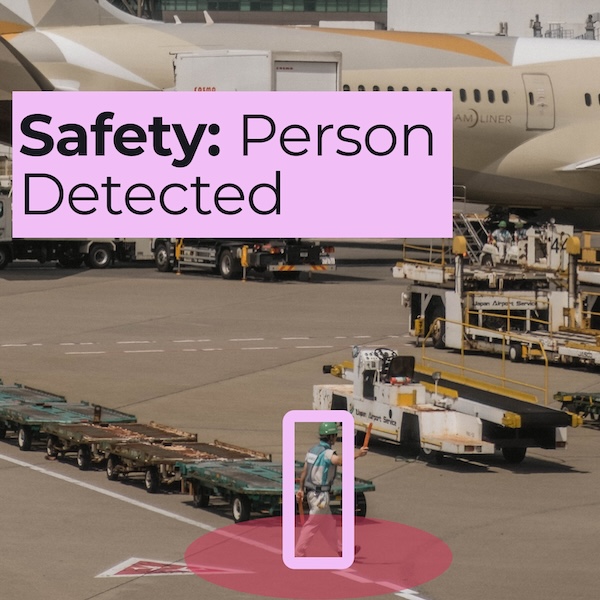
Safe Proximity to Moving Vehicles
One more application of Vision AI uses the technology’s ability to identify both vehicles and people present on a scene. Therefore, a Vision AI system can detect and recognize individuals who are in dangerously close proximity to moving vehicles. When it identifies such a situation, an immediate alert is generated to warn both the vehicle operator and the individual, mitigating the risk of potential accidents or injuries.
Strict safety protocols ensure that ground personnel avoid potential hazards in their vicinity, thereby fostering a safer working environment. In airport premises, much like in industrial environments, personnel safety monitoring solutions are becoming increasingly popular.
ULD Classification Automation
Within airport logistics, the various Unit Load Device (ULD) types present a challenge in accurate classification and counting. These encompass a diverse range, from pallets such as PMC and PAG to enclosed containers like AKEs and LD3s, specialized units like horseboxes for live animal transport, and flexible bulk bins for irregular cargo.
Vision AI technology stands as a game-changer in this landscape. Its camera systems and advanced AI algorithms identify and categorize these ULD variants, offering precise inventory management and expediting cargo handling processes. This automation streamlines operations across airport cargo facilities, ensuring efficient and error-free ULD tracking.
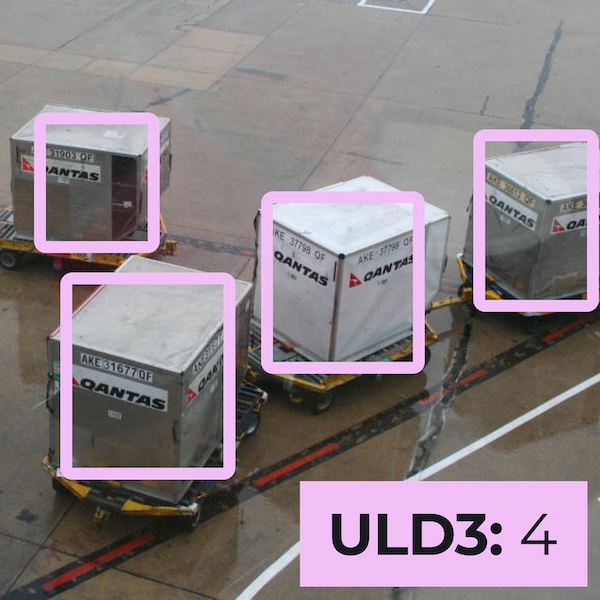
Baggage Handling with Vision AI
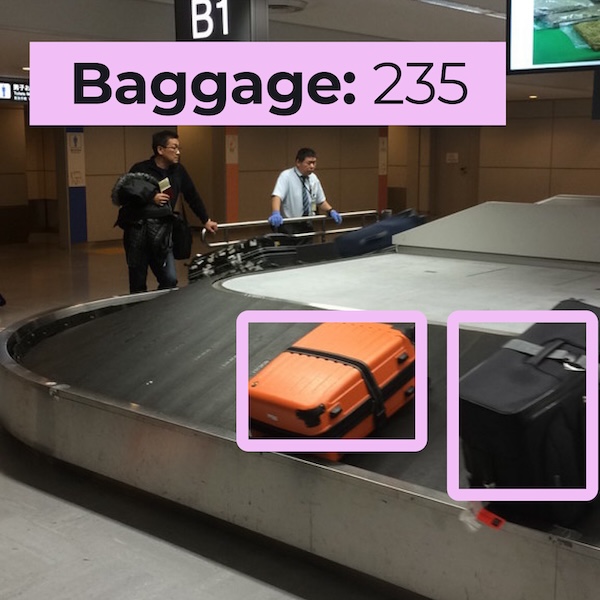
Baggage Counting
The challenge with baggage handling lies in ensuring every piece of luggage gets onto the right aircraft, and then back to their owners. Vision AI systems, integrated with baggage handling systems, employ vision sensors to monitor luggage flow. They identify, track, and verify bags, reducing the risk of misplacements or errors in counting.
Optimizing the airport logistics process is very similar to the supply chain and the manufacturing logistics processes. Innovative vision-based automation solutions contribute to a smoother and streamlined baggage hangling process and more punctual flight departures.
Unattended Baggage Detection
Unattended baggage poses a substantial security risk in airports, triggering concerns about potential threats or disruptions. Identifying and addressing this issue swiftly is crucial to maintaining a secure environment. Traditional surveillance methods often struggle to detect unattended items on time, leading to delays in response and heightened security risks. However, Vision AI solutions enhance surveillance capabilities by 24/7 scanning video feeds from various cameras across the airport. The technology rapidly identifies unattended baggage through pattern recognition and behavior analysis, immediately flagging suspicious items for security personnel.
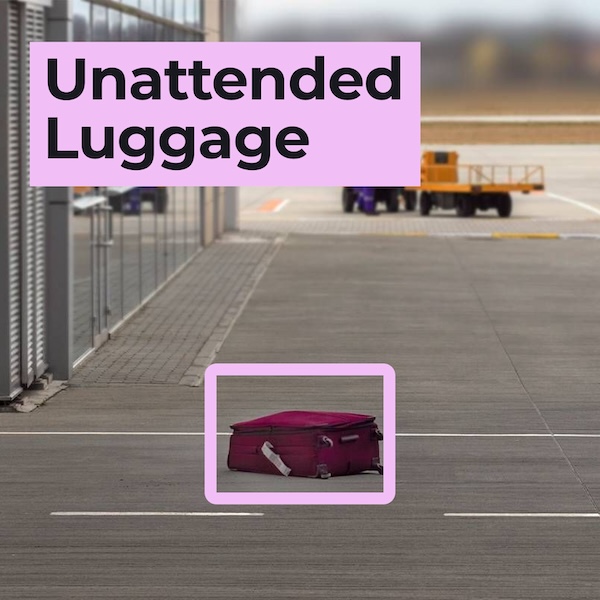
Insights from Vision AI in Dynamic and Queued Areas
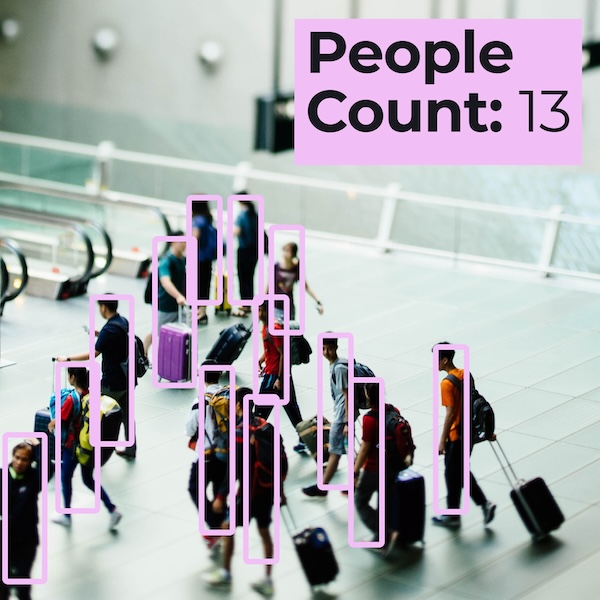
People Counting in Dynamic Areas
In bustling areas like escalators, moving walkways, security checkpoints, and other high-traffic sections within airports, accurately counting individuals presents a unique challenge. Vision AI technology steps in with a robust solution: employing sophisticated cameras and advanced algorithms to achieve real-time, precise people counting. Whether it’s tracking passenger flow on escalators or optimizing security checkpoint throughput, this system offers meticulous headcounts.
Check out Irida Labs’ privacy-preserving social distancing use case, providing valuable insights into people’s movement and interaction habits.
Insights from Queue Analytics
In addition to dynamic areas, counting individuals within queues at ticket counters, security lines, or boarding gates presents its own set of challenges. Usable analytics on passenger behavior can make a huge difference in the overall experience, and much like in retail businesses enhance the customer experience. Vision AI technology extends its capabilities to accurately count people in these stationary yet crucial zones. By analyzing queue lengths and fluctuations, this system provides valuable insights into waiting times, identifies bottlenecks, and recognizes peak hours.
Developed in collaboration with our partners at Intel, we have released a Vision AI solution for areas that have a physical presence of people on promises, such as stores, shopping malls, supermarkets, and of course airports and more. The solution provides accurate people counting to measure footfall, producing insightful smart space analytics and helps stakeholders make informed decisions about cost savings, and increased traveler experience.

Should you have any questions, require further consultation, or seek assistance in implementing Computer Vision AI, please don’t hesitate to reach out. Contact us at cnd_irida [at] iridalabs.com or through our contact form for personalized guidance and expert assistance. The future of innovation and transformation begins here!

